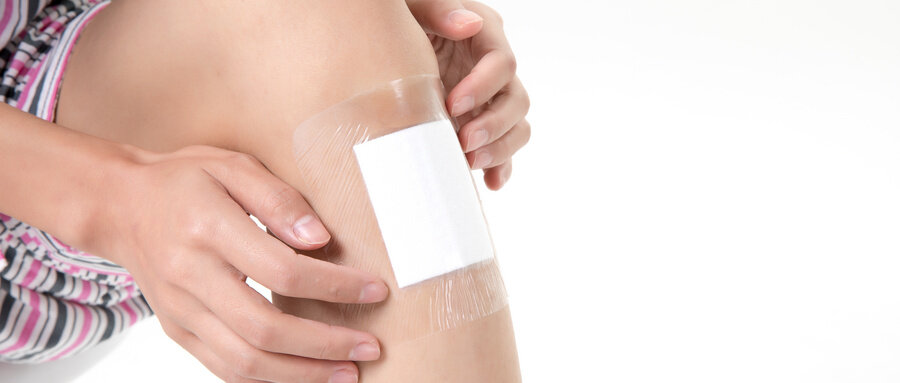Email cannot be empty
Password cannot be empty
Email format error
Email cannot be empty
Email already exists
6-20 characters(letters plus numbers only)
The password is inconsistent
Email format error
Email cannot be empty
Email does not exist
6-20 characters(letters plus numbers only)
The password is inconsistent


Exploring the World of Wound Dressing: An Insight into Wound Dressing Manufacturers
Wound care is a vital aspect of healthcare that touches millions of lives across the globe. Whether it’s a minor cut from kitchen mishaps or a serious injury requiring long-term care, wound healing is crucial for overall health and well-being. A key player in this healing process is the humble but essential wound dressing. But have you ever wondered where these wound dressings come from? Let’s take a closer look at the fascinating world of wound dressings and the role of wound dressing manufacturers in ensuring we have access to the best products for wound care.
What is Wound Dressing?
Before diving into the role of a wound dressing manufacturer, it's essential to understand what wound dressing is and why it plays such a critical role in healthcare.
Wound dressings are materials specifically designed to be applied over wounds to promote healing, protect the wound from infections, and absorb exudate (fluid leaking from the wound). They come in many forms and types, tailored to different wound care needs, ranging from simple gauze to more complex dressings designed for chronic wounds.
Some common types of wound dressings include:
- Gauze Dressings: These are one of the most traditional forms, often used for simple cuts or scrapes. They are usually cotton-based and work well for keeping wounds clean.
- Hydrocolloid Dressings: These contain gel-forming agents and are used for wounds that need moisture to heal effectively.
- Foam Dressings: These are absorbent and cushioned, ideal for wounds that produce a lot of fluid.
- Antimicrobial Dressings: As the name suggests, these dressings help prevent infections by containing materials like silver that have antimicrobial properties.
Each type of dressing has its own unique purpose, and choosing the right one can significantly impact the speed and quality of wound healing.
The Role of Wound Dressing Manufacturers
Behind every well-crafted wound dressing is a wound dressing manufacturer that puts in time, effort, and research to ensure that the product is both safe and effective. These manufacturers play a crucial role in the global healthcare ecosystem, producing the dressings that hospitals, clinics, and even individual consumers use daily.
1. Research and Development (R&D)
A significant part of any wound dressing manufacturer’s work lies in research and development. As medical science advances, so does the understanding of how wounds heal. Manufacturers invest in R&D to discover new materials, technologies, and solutions that can improve wound care.
For instance, many manufacturers have developed advanced dressings that not only cover and protect wounds but actively promote faster healing. These innovations include dressings with embedded growth factors, bioactive compounds, or antimicrobial agents that target bacteria at the wound site.
Hydrogel dressings, for example, are a relatively new development, and they represent how R&D efforts lead to better outcomes. These dressings maintain a moist environment, which helps wounds heal faster while providing a cooling sensation that can relieve pain.
2. Quality Assurance and Testing
Wound care products must meet stringent safety and quality standards to be considered for medical use. This is where the wound dressing manufacturer steps in, ensuring that every dressing produced is safe, sterile, and effective.
Quality control is vital, as a defective dressing could lead to serious consequences, such as infections or delayed wound healing. Manufacturers use a variety of testing methods to check for absorbency, sterility, durability, and the material's reaction to bodily fluids. They also conduct trials to ensure that the dressing can stay in place for the recommended period and doesn't cause irritation to the skin.
By maintaining high standards, wound dressing manufacturers ensure that healthcare professionals can rely on these products to care for patients effectively.
3. Sustainability and Ethical Manufacturing
Another important trend in the wound care industry is the move towards more sustainable and ethical production processes. Many modern wound dressing manufacturers are making an effort to reduce their environmental footprint by using renewable materials and minimizing waste.
Biodegradable wound dressings are becoming increasingly popular. These dressings are made from natural materials that break down harmlessly after use, reducing environmental waste. For instance, some manufacturers are developing dressings from materials like chitosan, a substance derived from the shells of crustaceans, which is both biodegradable and has natural antimicrobial properties.
Ethical practices are also becoming more important. Many wound dressing manufacturers now focus on fair labor practices and ensuring that their supply chains are free from exploitation. This shift towards ethical production helps build trust with consumers and medical professionals alike.
4. Customization and Specialized Products
Wound care is not a one-size-fits-all solution. Different types of wounds require different types of care, and a good wound dressing manufacturer understands this. Many manufacturers offer customized or specialized products tailored to specific needs.
For example, dressings designed for diabetic ulcers need to be different from those used for post-surgical wounds. Diabetic ulcers are often chronic and can take a long time to heal, meaning the dressing needs to be particularly effective in managing exudate and keeping the wound environment moist but clean.
Manufacturers work closely with healthcare providers to create solutions for these unique challenges, ensuring that each type of wound has a corresponding dressing that offers the best chance for healing.
5. Collaborations with Healthcare Providers
Wound dressing manufacturers don’t work in isolation. They often collaborate with healthcare providers, doctors, and nurses to better understand the practical needs of wound care. This collaboration ensures that the products developed are not only scientifically sound but also meet the day-to-day realities of wound care in hospitals, clinics, and homes.
For example, a wound dressing manufacturer might receive feedback from a nursing team that a certain type of adhesive dressing causes skin irritation for elderly patients. The manufacturer can then use this information to tweak the product, perhaps by using a gentler adhesive or incorporating materials that are less likely to cause allergic reactions.
These partnerships are key to improving patient outcomes and advancing the field of wound care as a whole.
6. The Importance of Cost and Accessibility
While developing innovative and high-quality products is essential, wound dressing manufacturers must also focus on making their products accessible to as many people as possible. This means producing dressings that are not only effective but also affordable.
Cost is a significant factor, especially in countries with limited healthcare resources or where individuals may need to purchase wound care products directly. Many manufacturers work hard to balance innovation with affordability, creating products that offer the best value for money.
In recent years, some manufacturers have also focused on creating products that can be easily used by individuals at home. As home care becomes more common, the demand for easy-to-use, pre-packaged wound dressings has grown. These products empower people to take control of their own wound care without needing frequent visits to the doctor.
Future Trends in Wound Dressing Manufacturing
As with many industries, technology and innovation are driving the future of wound care. Wound dressing manufacturers are constantly looking for ways to improve their products, and several exciting trends are on the horizon.
1. Smart Dressings
One of the most exciting developments in the field of wound care is the rise of "smart" dressings. These are dressings embedded with sensors that can monitor the condition of the wound, such as the temperature, pH levels, and moisture. The dressing can then send data to healthcare providers, allowing for real-time monitoring of the healing process.
2. Regenerative Medicine and Bioactive Dressings
Another promising area of research is the development of dressings that not only cover the wound but actively promote tissue regeneration. These bioactive dressings might contain stem cells, growth factors, or other substances that encourage the body to heal more quickly and effectively.
3. 3D Printing and Customizable Solutions
Some wound dressing manufacturers are beginning to explore the potential of 3D printing to create custom-fit dressings for patients. This technology could allow for the creation of wound dressings tailored specifically to the shape and size of an individual's wound, providing better coverage and protection.
Conclusion
The world of wound care is intricate, with wound dressing manufacturers playing a central role in developing products that promote healing, prevent infection, and improve patient outcomes. Through research, innovation, and collaboration with healthcare providers, these manufacturers ensure that patients receive the best possible care for their wounds.
From traditional gauze dressings to cutting-edge smart technologies, the work of a wound dressing manufacturer is critical to the healthcare system. As technology continues to advance, we can expect even more exciting developments that will continue to improve wound care, making it more effective, accessible, and tailored to the individual needs of patients.

